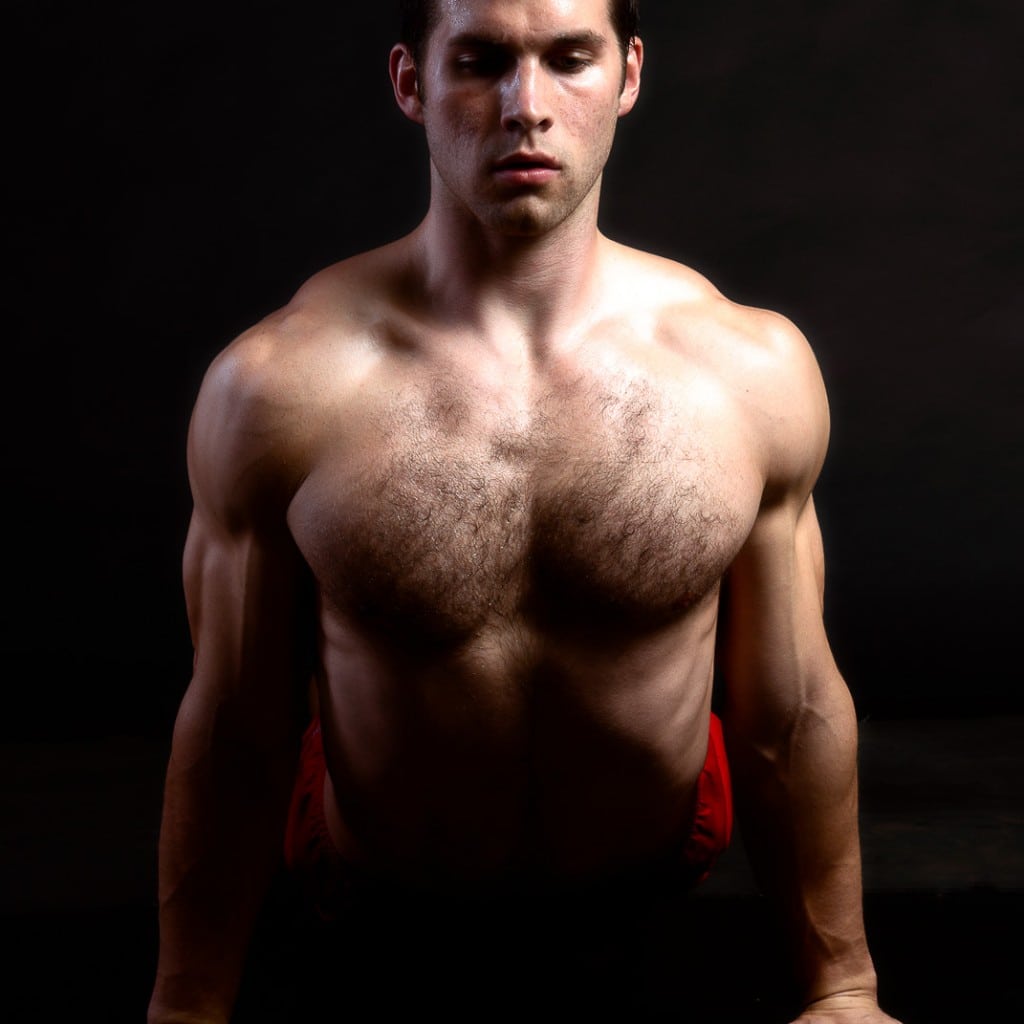Hi Dean,
My name is Danny. I’m wondering how often you practice yoga and what supplements you take? Thanks, Danny.
Hi Danny,
I try to do two shorter yoga sessions daily (30 – 45 minutes) or one longer session (75 minutes). What you’re really asking though is how much yoga you have to do to get the results you want. It isn’t so important how long you’re doing yoga as WHAT you’re doing. When I do my yoga, it’s typical of what you would expect in a Man Flow Yoga session, and that means more focus on upper-body, more strength building poses, and less movement – more similar to a hatha or Bikram yoga class.
As far as supplements go, I don’t take anything too out of the ordinary. I take zinc, magnesium, men’s one-a-day vitamin, turmeric, glucosamine, and a B complex vitamin. I also sometimes take maca powder, mucuna pruriens, and cordyceps, which help boost energy and testosterone.
Hope this answers your question!
Hi Dean,
I was wondering what your opinion on yoga in a hot room is, and I mean heated not even Bikram ( 90-100+). I don’t subscribe to the pseudoscience of sweating your toxins out and feel it is a dangerous practice that doesn’t allow the body to cool itself naturally. If this is really beneficial to health why aren’t all gyms heated to 90 degrees. I was in a class tonight and felt like I couldn’t cool off so I thought I’d ask. I really value your view on this and maybe you could enlighten me. Thanks, John.
The reason why yoga is typically done in a hot environment is that it makes your muscles more limber. Practicing in that kind of heat isn’t necessarily unhealthy (according to all the research that I have seen and my own experience), but I would recommend also doing yoga in non-heated atmospheres, like outside in a park or in your own home, so you don’t have to use the heat as a crutch to be able to do yoga. You should train like you live, and you’re not always going to be in a humid, 90 degree plus environment, so you shouldn’t always do yoga in that type of environment.
As far as the safety of the heat goes, as long as you are properly hydrated and sweating, and you don’t have any medical conditions that make heat an issue, I don’t see an issue with it. Enjoy the heat, but be careful in it. If you feel light-headed or nauseous, get out of the room. (Don’t listen to the Bikram instructor telling you to sit there and relax.)
Dean, I’ve been using your videos, love them, and am wondering if you would take a request. I’m a runner and have been looking for a good stretch routine for before my runs to help get warmed up and avoid injuries. I was thinking a 15-20 min yoga session would be a great warm up but am not really sure which poses/order would be best to use. Could you come up with a routine, and maybe make it into a video? Thanks! Tyler
I’m a temporary hiatus of making full body videos until my knee heals, but here are a couple of videos that would be a great warm-up for what you’re looking for.
Full Body Flow – a little longer at 25 minutes, but full-body.
Try these out!
Dean
Hi Dean,
I’m 42 yrs old and I train in Brazilian jiu jitsu , I started my first yoga class and loved it, my question is this… Will yoga build muscle while increasing my flexibility .?? If so can I ditch the weight training and make yoga my sole workout?
Hope you can help. Cheers, Dave
I’m 42 yrs old and I train in Brazilian jiu jitsu , I started my first yoga class and loved it, my question is this… Will yoga build muscle while increasing my flexibility .?? If so can I ditch the weight training and make yoga my sole workout?
Hope you can help. Cheers, Dave
As long as you are doing yoga that gets you the point where your muscles are shaking (muscle failure) then you will keep your muscle mass. Just make sure that you’re getting all your muscles involved. Keep up the upper body poses so you don’t lose upper body mass. You won’t have a problem retaining lower body mass. Man Flow Yoga ensures that you get the upper body as well. Not all power classes do, however. I would also keep up pulling/rowing resistance exercises like pull-ups. Yoga doesn’t get a ton of that.


Hi Dean. Need some advise if you can. I have runners knee and was told yoga would help. Any suggestion? Any specific poses or stretching exercises u can do.
Thanks Andy
Andy – the way yoga would help is by correcting the imbalances in your leg that put a disproportionate amount of stress on the tendons in your knee. Work on the flexibility in your quads, hamstrings, glutes and calves, as well as the STRENGTH in your upper legs. Some poses – downdog for calves and hamstrings, runner’s lunge for upper leg strength and hip flexibility, or just doing squats to help strengthen your thighs and develop hip flexibility. Your first step, however, is STOP running, and then ice your knee and NSAIDS (ibuprofen).